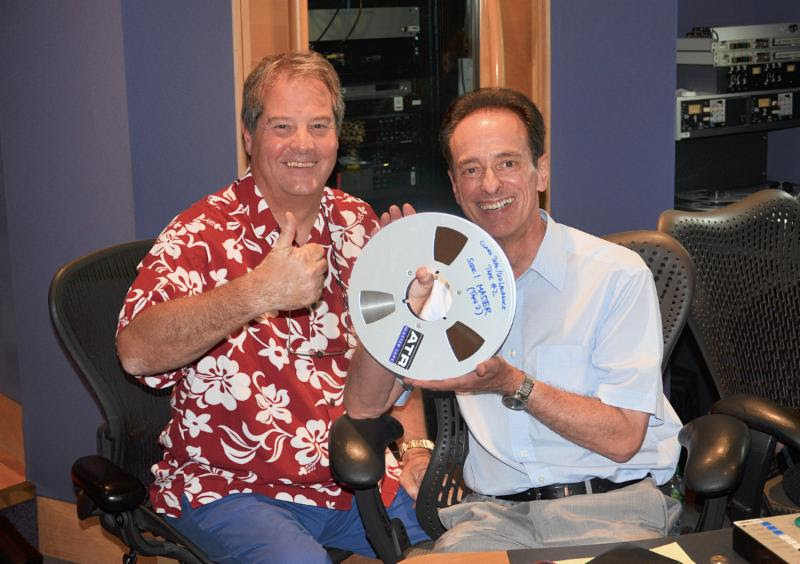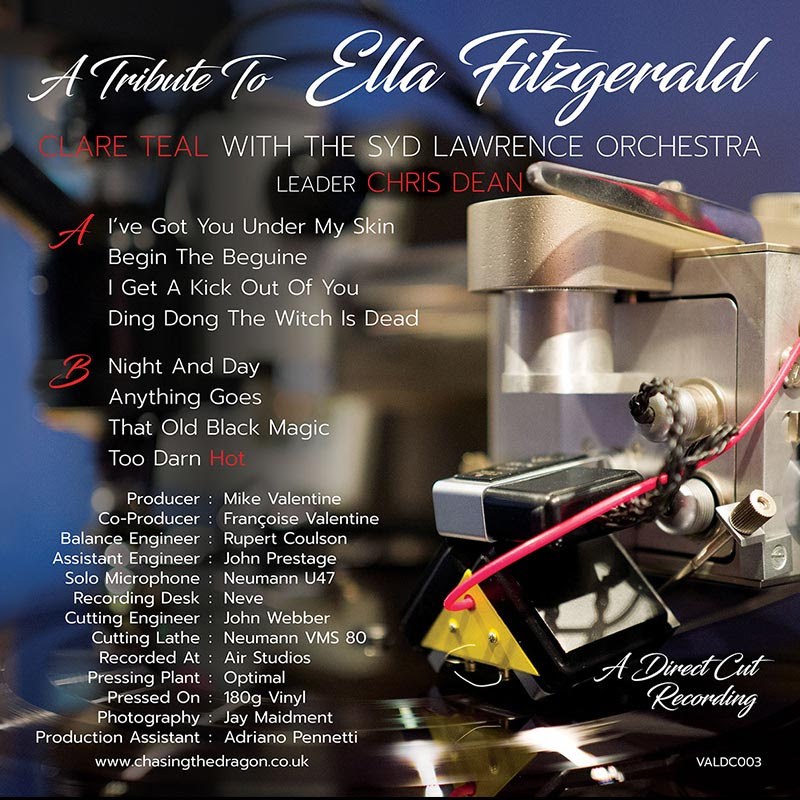Direct cut vinyl record vs high res studio master digital file
Author: Neville Roberts
A rare opportunity to compare a direct cut vinyl record against a high-resolution studio master digital file of the identical live recording session.
Media Showdown
I have been very fortunate to have been invited to AIR Studios in London for a mastering session of a recording that was made earlier by Mike Valentine of Chasing The Dragon records (the report of that session was featured in audioXpress November 2016). Chasing The Dragon is a record label specializing in audiophile recordings of classical and jazz music, owned by Mike and Françoise Valentine.
Mike Valentine is particularly passionate about direct-to-disk, or direct cut, recordings (remember the Sheffield Labs direct-to-disk records of the seventies?) This recording resulted in a direct-to-disk LP entitled A Tribute to Ella Fitzgerald featuring Clare Teal with the Syd Lawrence Orchestra. In addition to cutting the vinyl master, Valentine also made 30 inches per second recordings on a ½ inch Studer A80 tape machine. The purpose of the session I attended was to digitize the analog tapes and convert the master digital copy to CD format.

Mike Valentine and Neville Roberts at Air Studios. A rare opportunity to compare a direct cut vinyl record against a high-resolution studio master digital file of the identical live recording session.
The analog tapes were recorded from the same stereo mix from the Neve mixing desk that was fed to the cutting lathe, so the tapes were also an unedited capture of the live performance. The first job in making a CD is to digitize the analog masters to the high-quality digital standard of 24-bit, 192 kHz sampling, using a professional analog to digital convertor (ADC) and feeding the result into AIR Studio's Sequoia mastering software. Obviously, this process has to be carried out in real time and while this was going on, it occurred to me that here was a rare opportunity to compare a digital studio master against a direct cut vinyl recording of the identical sound source. I discussed this with Mike and he very kindly agreed to let me have a master digital copy of a track to compare with the identical track on the direct cut LP.
Once the digitizing process was complete for both Side A and Side B tapes, it was time for John Webber, the recording engineer, to work his magic on the digital file. This involved tightening up the gaps between tracks and a little subtle tweaking to the equalization using high quality digital filters. These allow him to adjust the balance of particular instruments to enable the final CD to produce the best possible sound in a domestic listening environment. This is where some real skill comes in, and the result of all this is a set of 24-bit/192-kHz digital master copies that were used to make the CD. John explained that there are two ways of creating the files to the CD Red Book standard of 16-bit, 44.1 kHz sampling. One is to use a straightforward digital conversion to the lower standard. However, in John's experience, this process can degrade the sound more than the alternative method of converting the digital signal back into analog in real time using a professional digital to analog convertor (DAC) and resampling this at 16/44 using the ADC. This latter, lengthier process was used to make the master CD files in order to produce the best possible quality from this format. Even though it sounded excellent, it was very clear that the CD format is certainly not up to the standard of the studio master digital copy, especially in terms of imaging and spatial positioning.
 A few weeks after this session, the first vinyl pressings arrived from Germany and Mike was able to send me an LP and the digital master of the last track of Side A - "Ding Dong, The Witch Is Dead," a 238 Mb WAV file for a 3½ minute recording. I cue up the same track on the LP and drop the stylus in the groove, and at the same time I start playing the digital copy on my media player. This enables me to switch rapidly between the two formats to make the comparison.
A few weeks after this session, the first vinyl pressings arrived from Germany and Mike was able to send me an LP and the digital master of the last track of Side A - "Ding Dong, The Witch Is Dead," a 238 Mb WAV file for a 3½ minute recording. I cue up the same track on the LP and drop the stylus in the groove, and at the same time I start playing the digital copy on my media player. This enables me to switch rapidly between the two formats to make the comparison.Both recordings sounded superb. The dynamics were stupendous and yet the orchestra never swamped Clare's vocals, which really did sound as though she was singing live in the room. The orchestra had an amazing sense of realism and clarity and the instrument positions were clear and focused - you could almost pick out all of the individual instruments by their position in the sound stage. The sound stage itself was wide (i.e., it extended well outside the boundaries of the loudspeakers) and had an amazing depth.
The LPs (and now CDs) of these audiophile recordings can be purchased directly from the Chasing The Dragon website or via the US distributor, Elusive Disk.
Comments (1)
They don't sell high resolution digital?
By: Ninja Gaijin on 7 October 2018I like that the verdict is pretty much that you should be buying the studio digital master files, which aren't for sale apparently, compared to the redbook CD. Analog is nice but a decent digital setup (with good high resolution digital sources) is the best bang for audio buck imo.
